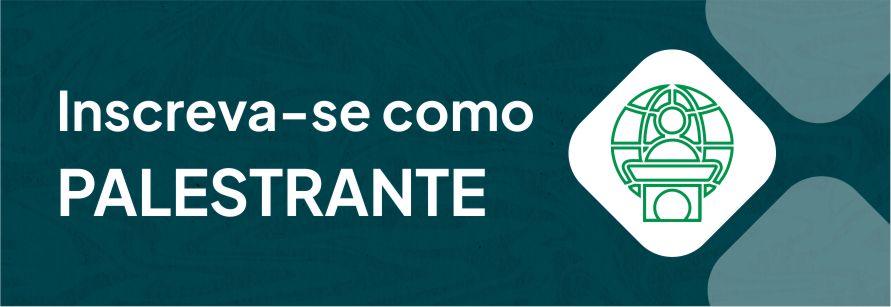Habilidades de narración y lectura en estudiantes de décimo grado de una escuela pública ecuatoriana
Resumen
Este es un estudio de investigación-acción dirigido a mejorar las habilidades de lectura a través de la aplicación de la narración de cuentos entre los estudiantes de décimo grado en una escuela pública en Loja, Ecuador. Una muestra de conveniencia de 29 estudiantes, 17 mujeres y 12 varones, participaron en el estudio durante 10 semanas con 40 horas de instrucción. Para alcanzar el objetivo del estudio, se utilizó un pretest y un postest elaborados por el investigador, un cuestionario y notas de campo para recoger datos cuantitativos y cualitativos. La prueba incluía cinco preguntas sobre los componentes de la lectura: fonética, conciencia fonémica, vocabulario, fluidez y comprensión. Se administró un cuestionario de tipo mixto para descubrir las percepciones de los alumnos sobre los elementos de la narración, como los personajes, el escenario, la trama, el conflicto, la solución y el punto de vista. Las diferencias entre el pretest y el postest indicaron que los alumnos aumentaron significativamente sus destrezas lectoras. Además, el cuestionario y las notas de campo revelaron que la narración de cuentos mejoraba las habilidades lectoras de los alumnos porque se implicaban en las historias, que a la vez captaban su interés y entusiasmo por seguir leyendo.
Descargas
Citas
Anggeraini, Y., & Afifah, N. (2017). Digital Storytelling as a Teaching Medium in Reading Classroom. Language Circle, 12(1), 8. https://doi.org/https://doi.org/10.15294/lc.v12i1.11472
Antunez, B. (2002). English Language Learners and the Five Essential Components of Reading Instruction. Launching Young Readers: https://www.readingrockets.org/article/english-language-learners-and-five-essential-components-reading-instruction
Bravo, F. A., Hurtado, J. A., & González, E. (2021, July 2). The Use of Story and Storytelling in Science Education. (Y. Hadzigeorgio, Ed.) Using Robots with Storytelling and Drama Activities in Science Education, 16. https://doi.org/https://doi.org/10.3390/educsci11070329
Casteleiro, R. S. (2011, 08 30). Reading Process. https://www.usf.edu/undergrad/academic-success-center/documents/reading-processes.pdf
CIERA, C. f. (2001, 09). Put Reading First the Research Building Blocks for Teaching Children to Read. Partnership for Reading, 63. https://files.eric.ed.gov/fulltext/ED458536.pdf
Cresswell, J., & Cresswell, J. (2018). Research Design Qualitative, Quantitative, and Mixed Methods Approaches (Fifth ed.). (C. Neve, Ed.) Los Angeles.: SAGE Publications, Inc. https://www.docdroid.net/XAQ0IXz/creswell-research-design-qualitative-quantitative-and-mixed-methods-approaches-2018-5th-ed-pdf
Creswell, J. W. (2012). Educational Research: Planning, conducting and evaluating quantitative and qualitative research (4th edition ed.). Boston: Pearson. http://repository.unmas.ac.id/medias/journal/EBK-00121.pdf
Davies, A. (2007). Storytelling in the Classroom: Enhancing Traditional Oral Skills for Teachers and Pupils (1 ed.). (B. M. Robinson, Ed.) California: SAGE Publications. https://books.google.com.ec/books?hl=es&lr=&id=Rt_RJ3w8M-cC&oi=fnd&pg=PP1&dq=Davies+2007+about+storytelling&ots=pBwEVUOT2j&sig=j6sg9zXGLiruPXXS6AevqEw1qlQ#v=onepage&q=Davies%202007%20about%20storytelling&f=false
Dujmović, M. (2014, 04 07). Storytelling as a Method of EFL Teaching. Pregledni rad, 14. Retrieved June 5, 2022, from Storytelling as a Method of EFL Teaching: https://hrcak.srce.hr/file/17682
Esra’a Radaideh, D. A. (2020). Digital Storytelling: Time to be Considered in Reading. Universal Journal of Educational Research, 8(6), 2621- 2633. https://doi.org/10.13189/ujer.2020.080645.
Esra’a Radaideh, D. A. (2020). Digital Storytelling: Time to be Considered in Reading. Universal Journal of Educational Research, 13. https://doi.org/https://www.hrpub.org/download/20200530/UJER45-19515919.pdf
Gagne, R. M., Briggs, L. J., & Wagner, W. W. (1992). Principles of Instructional Design. In L. J. Robert M. Gagne, & C. Thownsend (Ed.), Principles of Instructional Design (4 ed., pp. 185- 203). Philadelphia, San Diego: Harcourt Brace & Company. https://www.hcs64.com/files/Principles%20of%20instructional%20design.pdf
Gay, L. R., Mills, G. E., & Airasian, P. (2014, 11 06). Educational research: competencies for analysis and applications. Pearson. https://yuli-elearning.com/pluginfile.php/4831/mod_resource/content/1/Gay-E%20Book%20Educational%20Research-2012.pdf
Lazareva, A., & Cruz-Martinez, G. (2020). Digital Storytelling Project as a Way to Engage Students in Twenty-First Century Skills Learning. Oxford, 22(4), 383. https://doi.org/https://doi.org/10.1093/isp/ekaa017
Miller, S., & Pennycuff, L. (2008, 05 12). The Power of Story: Using Storytelling to Improve Literacy Learning. Journal of Cross-Disciplinary Perspectives in Education, 1(1), 36- 46. https://wmpeople.wm.edu/asset/index/mxtsch/storytelling
MINEDUC. (2016). Acuerdo ministerial. Quito: Quipux.
Monroy, J. A., & Gómez, B. E. (2009, 08 14). Comprension lectora. Comprensión Lectora: http://pepsic.bvsalud.org/pdf/remo/v6n16/v6n16a08.pdf
Rahiem, M. D. (2021). Storytelling in early childhood education: Time to go digital. SpringerOpen, 15(4), 20. https://doi.org/https://doi.org/10.1186/s40723-021-00081-x
Rameswara, K. H., Adnyani, L. D., & Pratiwi, N. P. (2019, 9 3). Developing Story Jumper-Based Teaching Media to Enrich Kindergarten Students' Vocabulary. International Journal of Language and Literature, 3(4), 147- 158. https://doi.org/https://doi.org/10.23887/ijll.v3i4.28415
Robin, B. R. (2009, October 14). Digital Storytelling: A Powerful Technology Tool for the 21st Century Classroom. Routledge, 47(3), 220 - 228. https://doi.org/10.1080/00405840802153916
Robin, B. R. (2016, 1 6). The Power of Digital Storytelling to Support Teaching and Learning. Digital Education(30). ERIC: https://files.eric.ed.gov/fulltext/EJ1125504.pdf
Sheth, T. D., & Chauhan, N. (2015, May 5). Receptive skills-Listening and Reading: A sin qua non for Engineers. ResearchGate: https://www.researchgate.net/profile/Tarjani-Sheth/publication/301787025_Receptive_Skills-Listening_and_Reading_A_sin_qua_non_for_Engineers/links/5728305208ae262228b45b7d7Receptive-skills-Listening-and-Reading-A-sin-qua-non-for-Engineers.pdf
Sonday, A. (2021, 09 16). Digital Storytelling as a Reflective Tool in Occupational Therapy Curriculum. Hindawi: https://www.hindawi.com/journals/oti/2021/2463916/
Tinckler, R. (2017, 06 30). Connecting Storytelling and Social Wellness: A Case for Holistic Storytelling in the Elementary Classroom. LEARNing Landscapes: https://files.eric.ed.gov/fulltext/EJ1253509.pdf
Derechos de autor 2023 Denys Hypatia Lozano Guaillas;Miriam Eucevia Troya Sánchez

Esta obra está bajo licencia internacional Creative Commons Reconocimiento 4.0.













.png)




















.png)
1.png)


